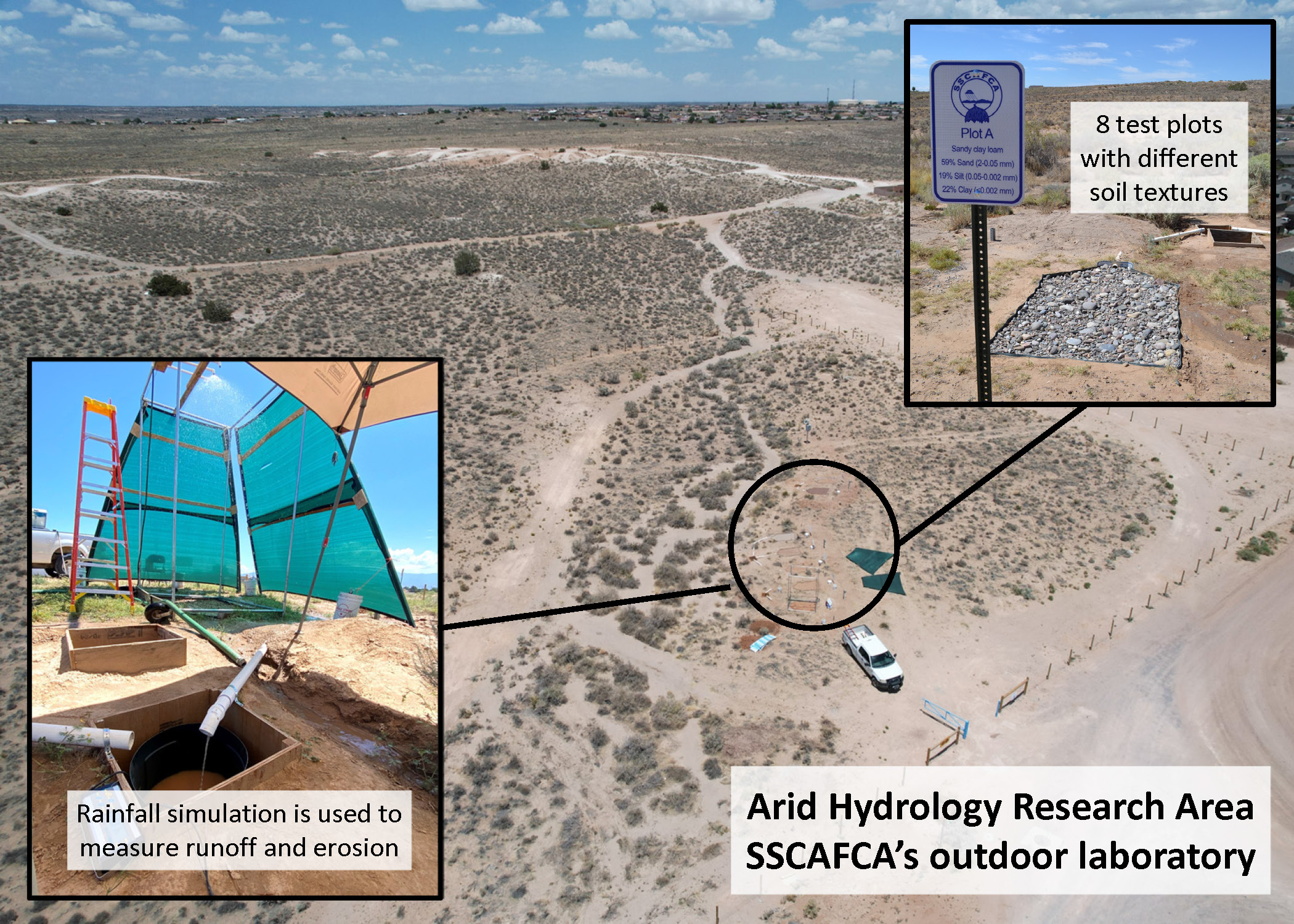Arid Hydrology Research Area
Much of the arid and semiarid western United States is affected by flash flooding associated with infrequent extreme rain events. Floods have large social and economic consequences for communities and individuals. Thus, flood hazard assessment is important to reduce flood-related risks and support sustainable development.
Flood prediction relies heavily on hydrologic models, which are plagued by substantial uncertainties. To improve model performance, SSCAFCA established an outdoor laboratory called the Arid Hydrology Research Area (AHRA) in 2022. AHRA is situated on a four-acre parcel of land in Rio Rancho. The site is used to conduct runoff experiments using a rainfall simulator, a device that can reproduce the intense rainfall often observed during the summer Monsoon. Research is guided by Dr. Schoener, SSCAFCA Senior Hydrologist, with the aid of civil engineering graduate students from the University of New Mexico. Results will be used to develop guidance for hydrologic modeling that is widely applicable throughout the semiarid Southwest to reduce the uncertainty associated with flash flood prediction.

Dr. Gerhard Schoener
Senior Hydrologist, SSCAFCA
Dr. Schoeners’ work at the Arid Hydrology Research Area focuses on rainfall-runoff processes in dryland watersheds. His goal is to develop better tools for predicting runoff, managing stormwater in urbanizing areas, and protecting vital ecosystem services provided by ephemeral streams.
Published Papers
Infiltration Model Parameters from Rainfall Simulation for Sandy Soils
Closure to “Infiltration Model Parameters from Rainfall Simulation for Sandy Soils
HEC-HMS Infiltration Model
In 2023, a new version of the HEC-HMS model was released including an infiltration method developed at SSCAFCA by Dr. Schoener. HEC-HMS is widely used for hydrologic analyses in the US and around the world. It is also the software of choice for rainfall-runoff models within SSCAFCA’s jurisdiction. The new infiltration method is called the linear deficit and constant loss method.
HEC-HMS 4.12 can be downloaded from the HEC website: https://www.hec.usace.army.mil/software/hec-hms/downloads.aspx
along with model documentation: https://www.hec.usace.army.mil/confluence/hmsdocs/hmstrm/infiltration-and-runoff-volume/linear-deficit-and-constant-model
and a tutorial: https://www.hec.usace.army.mil/confluence/hmsdocs/hmsguides/applying-loss-methods-within-hec-hms/applying-the-linear-deficit-and-constant-loss-method



